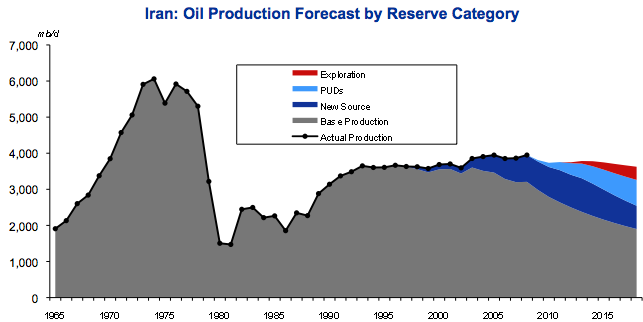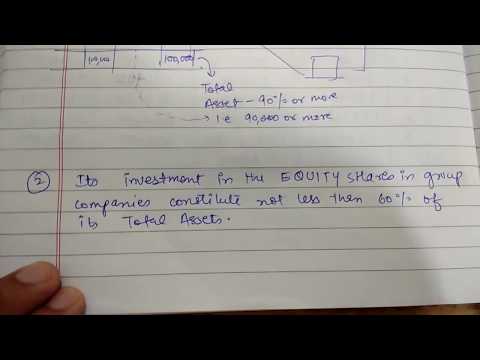

The entry point for a trade might be a long way from the stop loss when the Doji’s tail or wick is combined with the size of the confirmation candle. This means traders will have to either move their stop loss or cancel the trade because a stop loss that is too huge may not justify the deal’s potential profit. If we twine it with a bearish trend like the market has behaved in the recent past it could suggest some stocks that could see an uptick.
What is dragonfly doji formation in an downtrend an indicator of?
What a Dragonfly Doji Indicates. When it forms at the bottom of a downtrend, the dragonfly doji is considered a reliable indication of a trend reversal. This is because the price hit a support level during the trading day, hinting that sellers no longer outnumber buyers in the market.
⭐If there are many Doji candlesticks in a row, the price action signals that the current trend is nearing its end and that a reversal would be imminent. ⭐A single Doji candlestick does not represent anything on its own. The formation of double Doji, along with price action, implies a substantial likelihood of a trend reversal or continuance.
⭐When a Doji candlestick appears, pay special attention to the candlestick’s prior price activity. Doji can also signal the start of a consolidation phase prior to a reversal or continuance phase. The Indian stock market has been trying to regain all of the lost momentum and has scaled back after seeing a bottom at about 5% below the peak level attained last month. Friday’s loss erased almost all the intra-week gains, which led to the formation of Gravestone Doji on the weekly scale, said Mazhar Mohammad of Chartviewindia.in. Price Data sourced from NSE feed, price updates are near real-time, unless indicated. Technical/Fundamental Analysis Charts & Tools provided for research purpose.
What happens after a Doji Candlestick?
To make high-probability trades, traders should look for additional technical tools to strengthen Doji candlesticks. Additionally, risk management is crucial while trading a Doji in order to reduce losses if the trade doesn’t appear to be advantageous. A Double Doji candlestick pattern is made up of two Doji candlesticks and represents a significant trend reversal or continuation.
- A daily candlestick represents the range of prices throughout the day, from high to low and back up again.
- The upper shadow of the Gravestone is quite lengthy, while the body is at the very bottom of the candlestick, indicating that the open, close, and low prices are all the same.
- When the market starts, bullish traders drive prices upward, while bearish traders reject the higher price and push it back down, forming this candlestick.
- It is an extremely helpful pattern to help traders visually see where resistance and supply are likely to be located.
- Trading the financial markets carries a high level of risk and may not be suitable for all investors.
Moreover, a doji is not a common occurrence; therefore, it is not a reliable tool for spotting things like price reversals. There is no assurance the price will continue in the expected direction following the confirmation candle. Every candlestick pattern has four sets of data that help to define its shape.
Share your thoughts
Furthermore, the pattern’s significance varies depending on the market and time frame studied. Rajesh Palviya of Axis Securities said Friday’s price action might just be a small pullback. The index continued to move in a higher high-higher low formation on the hourly chart, indicating a positive bias.
Gravestone Doji pattern provides critical cues of a trend shift for technical traders. Trading professionals may use it to visually assess where market resistance is and, likely, the end of a long position. To establish the conclusion of an uptrend, confirmation from the candlesticks developing next to the gravestone is required. A dragonfly doji has a lengthy lower tail, which means that the market has been saturated with selling and has pushed the price down for that period.

The Gravestone Doji candle shows that the buyers were strong initially but the bears took over and caused the price decline indicating the strength of the bear market. Neutral patterns indicate that buying and selling are almost the same and the future direction of the trend is uncertain. After an uptrend, the Gravestone Doji can signal to traders that the uptrend could be over and that long positions should probably be exited. But, an area of resistance is formed when it reaches the high of the day and the selling pressure pushes the prices back down to the opening price of the day. Things changed in late February when markets realised that Covid-19’s impact on insurers could be significant. Insurers are yet to know the full impact of the crisis as governments and regulators nudge them to give moratoriums to policyholders and quickly settle claims too.
They are commonly considered as components of bigger patterns and do not appear very frequently under ordinary conditions. This pattern may appear when neither buyers nor sellers can take the upper hand in the market. The first candle must be a long bearish or bullish candle followed by a doji. Formation of the doji is the most important factor as based on it you can recognise the type of reversal pattern. It is better that you do not rely on them entirely and instead consider several other aspects before moving in for a trade. The Doji candlestick chart pattern usually looks like a pair of vertical and horizontal lines intersecting each other.
When a Gravestone Doji appears at the top of an uptrend, it means the upswing has come to an end, and the uptrend is most likely ended. It’s a good idea to exit the transaction before the price decreases and the bears completely take over the market. If bulls try harder in the next candle, there’s a chance to get out on highs, but that’s not always the case, and it’s preferable to get out of a long position sooner rather than later. The Gravestone Doji is a candlestick that indicates that the market has reached its highest point. Four sorts of data are used to determine the shape of a candlestick pattern. Based on this structure, analysts can make inferences regarding price behaviour.
Investors looking for possible entry in the market it becomes crucial to confirm the trend. Most traders enter the market during the formation of the second candle or shortly after its completion. A question may arise, why the price reversed to reach to its opening by day end?
The Dragonfly Doji, long-legged Doji, Gravestone Doji, star Doji, and hammer Doji are some of the types of Doji in stock market. Stock Brokers can accept securities as margin from clients only by way of pledge in the depository system w.e.f. September 1, 2020. Update your mobile number & email id with your stock broker/depository participant and receive OTP directly from depository on your email id and/or mobile number to create pledge. However, Doji formation comes in 5 major types – Standard Doji, Long-legged Doji, Gravestone Doji, Dragonfly Doji, 4 price Doji.
A four-price doji candle is an indication that neither buyers nor sellers are motivated or interested. In essence, it indicates that there is minimal market activity and that the asset would be difficult to transact on. If there is simply a one-two trade at the same price, the four prices will not change. This characteristic severely limits the relevance of four-price doji. It is challenging to draw any firm conclusions from it, and given how rarely it occurs, it is also tricky to conduct empirical research on this pattern.
How to trade with Renko Charts Efficiently?
The absence or shortening of the lower shadow signifies that there was minimal or no buyer support during the session. The fact that Nifty could not defend its immediate support at 14,450 level has made a few analysts turn wary on the recent rally. This is especially after a couple of Hanging Man formations on the daily charts in recent days, which signalled a trend reversal. In addition to signaling indecision, the long-legged doji can also indicate the beginning of a consolidation period where price action may soon break out to form a new trend.
Is a dragonfly doji bearish?
Dragonfly doji is a bearish reversal pattern. It is opposite to the gravestone doji. In this pattern, open, high, and close are at the high of the day. Strategy: Long positions can be taken once high of the candle is exceeded.
The vertical line is called the wick and the horizontal line is called the body. It is not a good sign for bulls in uptrends – especially in higher time frames, such as 4 hours or daily candles, but the notion applies to all of the time frames. NUUU – A smart finance toolkit; is a modern fintech app that helps investor/trader’s make informed and smart decisions. Whether one is looking to invest in stocks & MFs or buy insurance. Some of them suggest indecision, while others aid in the identification of a continuing trend. Because double Doji candlestick formation is uncommon, it is always prudent to combine them with other technical tools to boost the odds in your favor.
What does a Doji candle tell traders?
When you find the answer to these questions, you will be able to form better trading strategies and identify price reversals and pattern signals. But it’s important to know that, Doji doesn’t mean reversal, it strictly points out the indecision of the market. It is created when the opening price, high, and closing prices of the candle are the same but the low price is way bearish dragonfly doji below them. Though it is not entirely reliable because a Doji candlestick pattern also indicates that buyers and sellers are gaining momentum. If we just look at the Doji candlestick, we can understand that there is hardly any difference between the opening and closing prices. This also means that both buyers and sellers have failed to create significant price movements.
A confirmation of the pattern can boost the odds of a profitable trade. The Gravestone Doji and Dragonfly Doji are two candlestick patterns that are utilized in technical analysis to forecast future price movements. The information on the zoompro.in website and inside our Trading Room platform is intended for educational purposes and is not to be construed as investment advice. Trading the financial markets carries a high level of risk and may not be suitable for all investors.
Nifty below 7850, Indian Markets Nervous
One can gauge a positive reversal if the pattern emerges at the downward trend. If the immediate candle gives a positive close, then the upward move is believed to have a confirmation. To learn more about the new trading strategy and doji formation that lets you profit in bull and bear markets so you grow your wealth steadily even during a recession. Though many people search about bullish candle patterns, here this article helps you to know more about theDoji Candlestick Patternand how to come across the trading market.
Moreover, instead of losing money rapidly, you will be able to minimize risks for your trades. This indicates that the bullish rally upward has been completely rejected by the markets. Looking at the candle, we can interpret the basic underlying psychology of the candle is to reflect a session that ends in indecision.
However, the Gravestone Doji Candlestick should be interpreted in tandem with other indicators and chart patterns to corroborate the bearish trend. The Gravestone Doji is typically viewed as a sign of possible weakness in an uptrend, implying that the bulls are losing control and now the bears are gaining power. It can hint that the price is about to fall, especially if it appears after one long uptrend or near a resistance line. “On Monday, a close below the 14,357 level may confirm the trend reversal in favour of the bears.
Is Dragon Fly doji bullish or bearish?
The Dragonfly Doji is bullish. A Dragonfly Doji signals that the price opened at the high of the session. There was a great decline during the session, and then the price closed at the high of the session. The result is that the open, high, and close are all the same (or about the same) price.
It arises when neither a bullish nor a negative trend is strong enough to influence market sentiment. A dragonfly doji is a candlestick pattern in which the open, high and close are equal. There are two types of Star Doji candlestick patterns and they appear at the end of either a downtrend or an uptrend. Both these Doji formations signal a different direction of the trend. Although the gravestone Doji candlestick is uncommon, you must be cautious when identifying one when you see one.
What does bearish doji indicate?
A gravestone doji is pattern that occurs in technical analysis. This doji is a bearish pattern that suggests a reversal followed by a downtrend in the price action. A gravestone pattern can be used as a sign to take profits on a bullish position or enter a bearish trade.
